One of the displays in the San Bernardino County Museum in Redlands, California, is entitled Sacred Earth and subtitled Understanding our past and honoring cultures that thrive today. The nature of California and Southwestern Indian culture began to change with the European invasion four centuries ago. One of the displays in the Museum looks at these changes.
One of the common myths, still perpetuated in some textbooks, is that the Indian peoples of California, Arizona, and New Mexico welcomed the Catholic missionaries, converted joyously to Christianity, and freely contributed their labor and resources to building missions and changing their way of life. In reality, there were many revolts against the missionaries and against the U.S. government which was attempting to impose an alien way of life upon them. Following the 1849 Gold Rush, American Indian genocide in California became particularly brutal. In 1866, the Chico Courant reported:
“It is a mercy to the red devils to exterminate them, and a saving of many white lives. Treaties are played out—there is only one kind of treaty that is effective—cold lead.”
In 1866, when the Luiseño left their village of Pejamo for their summer rounds, local Anglos entered the village, set fire to the houses, and then simply took possession of the fields and water supply. While both the Indians and their federal Indian agent complained, the Anglos retained control of the land.
According to the Museum display:
“With the California Gold Rush in 1849 came in influx of settlers and unrest. Many people within the tribes worked hard to maintain their tribal legacy. Santos Manuel, a Yuhaviatam tribal ancestor, led surviving Serrrano people to safety in 1866 as militant forces went on a violent 32-day campaign to kill them. Santos Manuel is revered to this day as the namesake of the San Manuel Band of Mission Indians.”
While some elements of Indian culture remained relatively unchanged, new design elements appeared in art as well as new materials.
 Shown above is a Chemayo placemat woven for sale to non-Indians.
Shown above is a Chemayo placemat woven for sale to non-Indians.  Shown above is Papago (Tohono O’odham) basket with a mission chapel design.
Shown above is Papago (Tohono O’odham) basket with a mission chapel design.  Shown above is a Serrano basket with a fence design.
Shown above is a Serrano basket with a fence design.  Shown above is a Serrano basket with a mission bell design.
Shown above is a Serrano basket with a mission bell design. 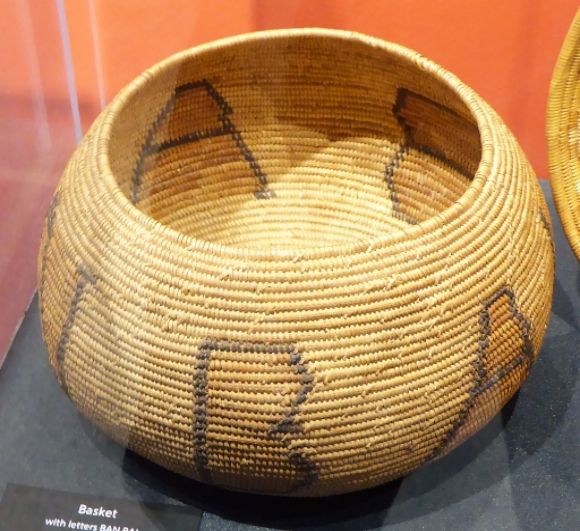 Shown above is a Serrano basket with a letter design.
Shown above is a Serrano basket with a letter design. 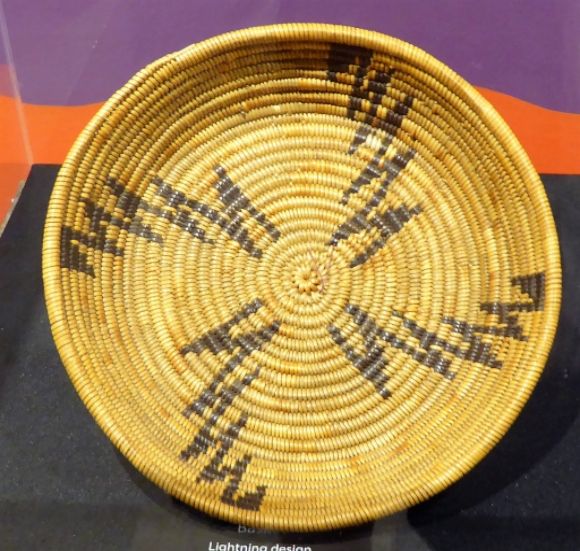 Shown above is a Serrano basket by Jesusa Manuel.
Shown above is a Serrano basket by Jesusa Manuel. 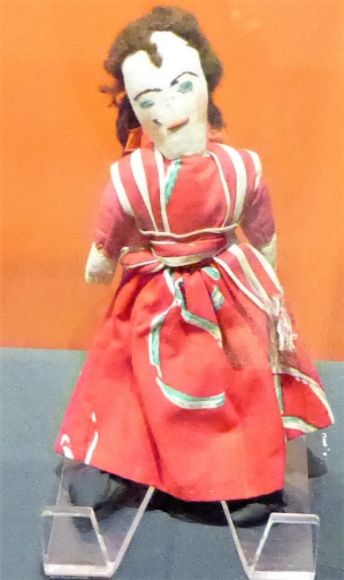 Shown above is a doll.
Shown above is a doll. 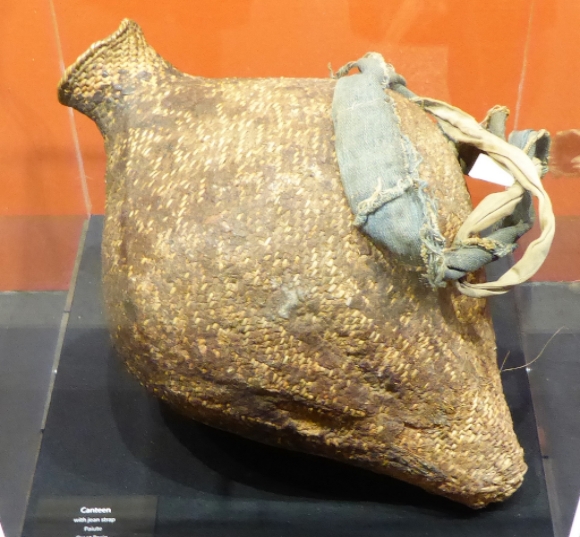 Shown above is a Paiute canteen.
Shown above is a Paiute canteen. 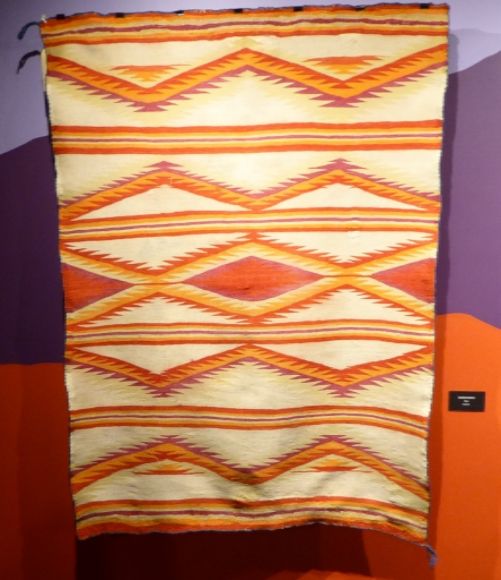 Shown above is a Hopi saddle blanket.
Shown above is a Hopi saddle blanket. 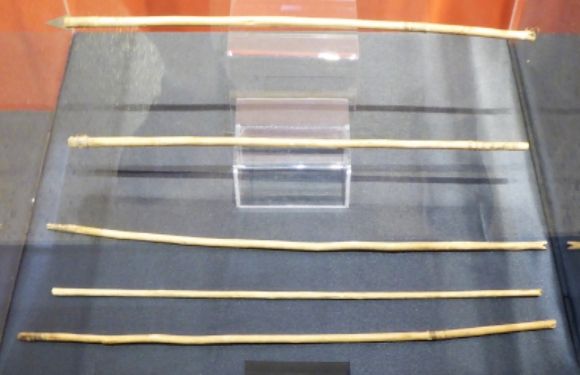 Shown above are some Mojave arrows.
Shown above are some Mojave arrows.
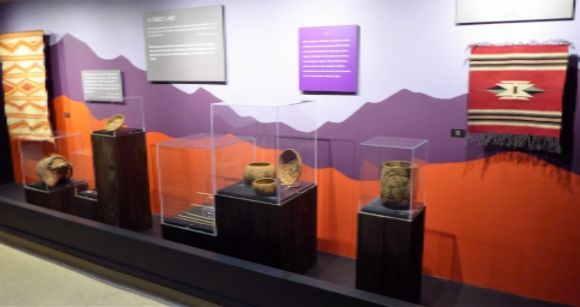
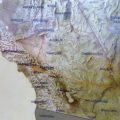
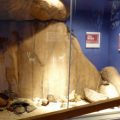
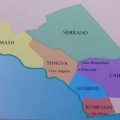
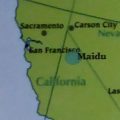
Leave a Reply